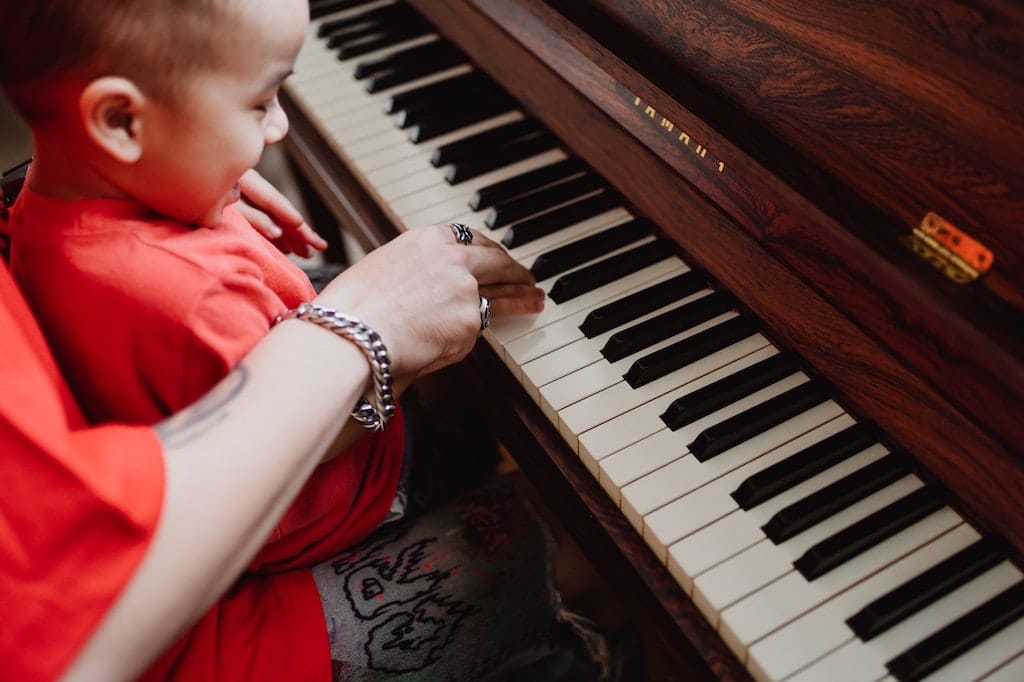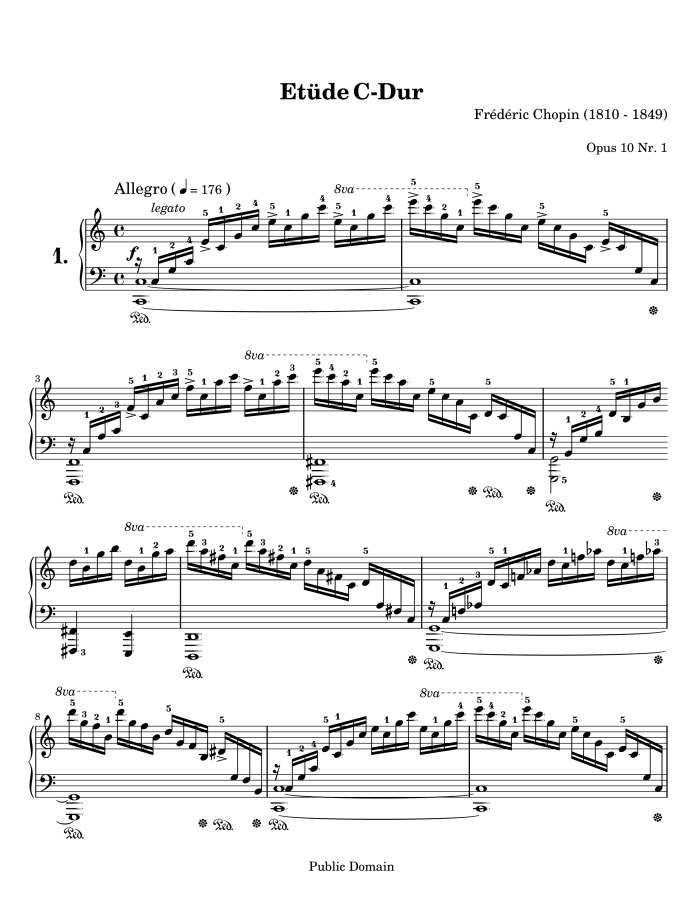Music for eye as well as ear

My son’s piano lessons afford me an opportunity to look at piano sheet music up close. Piano scores seem to have a unique visual beauty that music written for other instruments doesn’t quite match. I’m writing this after taking a look at ‘Children’s Corner’ (L.113), a six-movement suite for solo piano by French composer Claude Debussy (1862-1918).
The very first movement is titled ‘Doctor Gradus ad Parnassum’, a satirical dig at piano exercises (some say specifically those of Carl Czerny), often called ‘Gardus ad Parnassum (Steps to Parnassus). Parnassus is the loftiest part of the mountain range in central Greece, the name itself literally meaning ‘mountain of the house of God’ and occupies an important place in Greek mythology.
As you can imagine, both the visual and aural contours of the score are craggy, sometimes perfect symmetrical peaks in a measure, sometimes jagged and serrated.
Not all scores are eye-catching, of course. But the score of the fourth movement of Children’s Corner, ‘The Snow is Dancing’ does have an ordered jollity about it, just visually speaking. Maybe I’m biased from prior knowledge of the music and the title. But if you considered the score as some sort of Rorschach test, I think you’d agree with me. The notes in the upper and lower staves are ‘joined’ in the middle, so that the horizontal double lines joining them from the waist, the upper notes the heads and the lower notes the legs of dancing couples. In some measures, the slurs even make them seem as if they are using a jumping-rope to skip in playful abandon! You can check these out for yourself by seeking out the sound-tracks on YouTube that have the accompanying music score.
I’m obviously not the first to be struck by the physical beauty of the music score. The American music critic James Huneker (1857–1921) wrote of the “hypnotic charm” “for eye as well as ear” of Frédéric Chopin’s Étude Op. 10, No. 1 (the ‘Waterfall’, a visual image right there in the title) in the chapter “The Studies—Titanic Experiments” from his book “Chopin: The Man and His Music (1900)”.
But let me tell you here of my own ‘visual’ connection with this Chopin Étude. Around the 1980s in the pre-internet era, the first ten measures or so of this work were the soundtrack to some Indian television advertisement. The purpose of any advertisement is that the customer should remember the product. But this ad was so seductive that I remember the pretty woman secretive, in some sort of cloak with a cape, and this music that trailed off after a few seconds, followed by the sales pitch. But for the life of me I don’t remember the advertised product. I think it was some brand of luxury chocolate or coffee. Perhaps one of you readers can help me out here. But I used to love this ad, just for the music, but had no idea of its provenance back then. It sounded like it had flowed out of the pen of a great master, not an ad jingle-writer.
My ‘a-ha’ moment came in 1989 (I remember the year as I was an intern) at a piano recital at the Kala Academy. It was a Russian (Soviet would be more accurate, as the Berlin wall was still up and would only come tumbling down later that year) female pianist whose name currently escapes me, although I probably have the programme stashed somewhere.
But I clearly remember my ecstasy when she began playing this Étude. It was all I could do to keep leaping for joy, as I was hearing the rest of the piece that the ad had for so long, so enticingly, so frustratingly, mockingly, dangled before me.
To the ear, the music could well evoke a waterfall, earning it that nickname. But what about “music for eye”? Take a look at the accompanying picture as if it were a Rorschach test.

What imagery comes to mind when you see those ascending and descending arpeggios that have stretched and challenged dexterity of the right hand of pianists ever since Chopin composed this Étude in 1829?
Huneker compared the “hypnotic charm” that these “dizzy acclivities and descents exercise for eye as well as ear” to the frightening staircases in Italian Classical archaeologist, architect, and artist Giovanni Battista Piranesi’s prints of the ‘Carceri d’invenzione’ or ‘imaginary prisons’, a series of 16 prints that show enormous subterranean vaults with stairs and mighty machines.
Huneker must have had a Kafkaesque frame of mind that it could conjure up such gloominess. To me, it evokes something more cheery, with perhaps a touch of magic about them, like the moving staircases and landings in J. K. Rowling’s Hogwarts School of Wizardry.
This is not to say that sheet music other than piano scores isn’t beautiful to look at. Some of it certainly is. I leaf through my book of Kreutzer Études, for example, and some of them are quite aesthetically pleasing just to look at. The same is true for some (sections) of the movements of Johann Sebastian Bach’s Sonatas and Partitas for solo violin. A good example is the ‘bariolage’ portion of the mighty Chaconne of his Partita number 2 in D minor (BWV 1004).
But admittedly, the sheer ‘busy-ness’ of piano scores by virtue of all fingers of both hands coming into play in music-making, increases the probability of piano scores having that visual appeal. There’s just so much more going on in not just piano but any keyboard (harpsichord, organ) music, so in a sense the ‘canvas’ is fuller, compared to the music score in an essentially melodic instrument like a violin or cello (in which just four fingers of one hand come into ‘play’, quite literally).
As a general rule-of-thumb, though, the more visually appealing the score, the more technically challenging it usually is for the performer.
If you visit Pinterest, you’ll find that ‘framed sheet music’ is actually a thing, and quite a lucrative one at that. Facsimiles of Bach’s original scores are quite popular; I’ve seen them adorn many a musician’s home. Some of it stems from a deep reverence of a great music genius, but there’s also the ‘beauty’ element, perhaps in equal ‘measure’ (if you’ll pardon the pun).
This rainy season is the perfect time for a little ‘water-fall’ music for eye and ear. Gaze at the score and listen to a good recording (there are many to be found on YouTube as the pianist’s hands cascade up and down the register of the instrument. It takes me back to many places, from the 1980s TV ad and the hooded cloaked pretty model, to 1989 when I heard it live, in full spate for the first time, and now it might transport me to Hogwarts as well. Happy listening and viewing.
This article first appeared in The Navhind Times, Goa, India.





